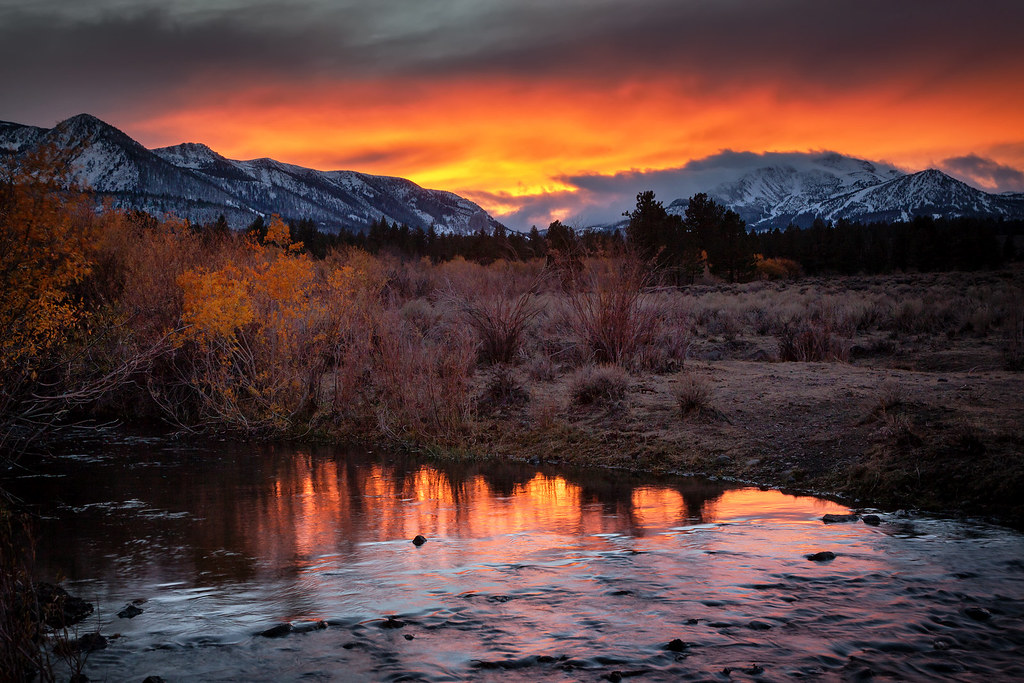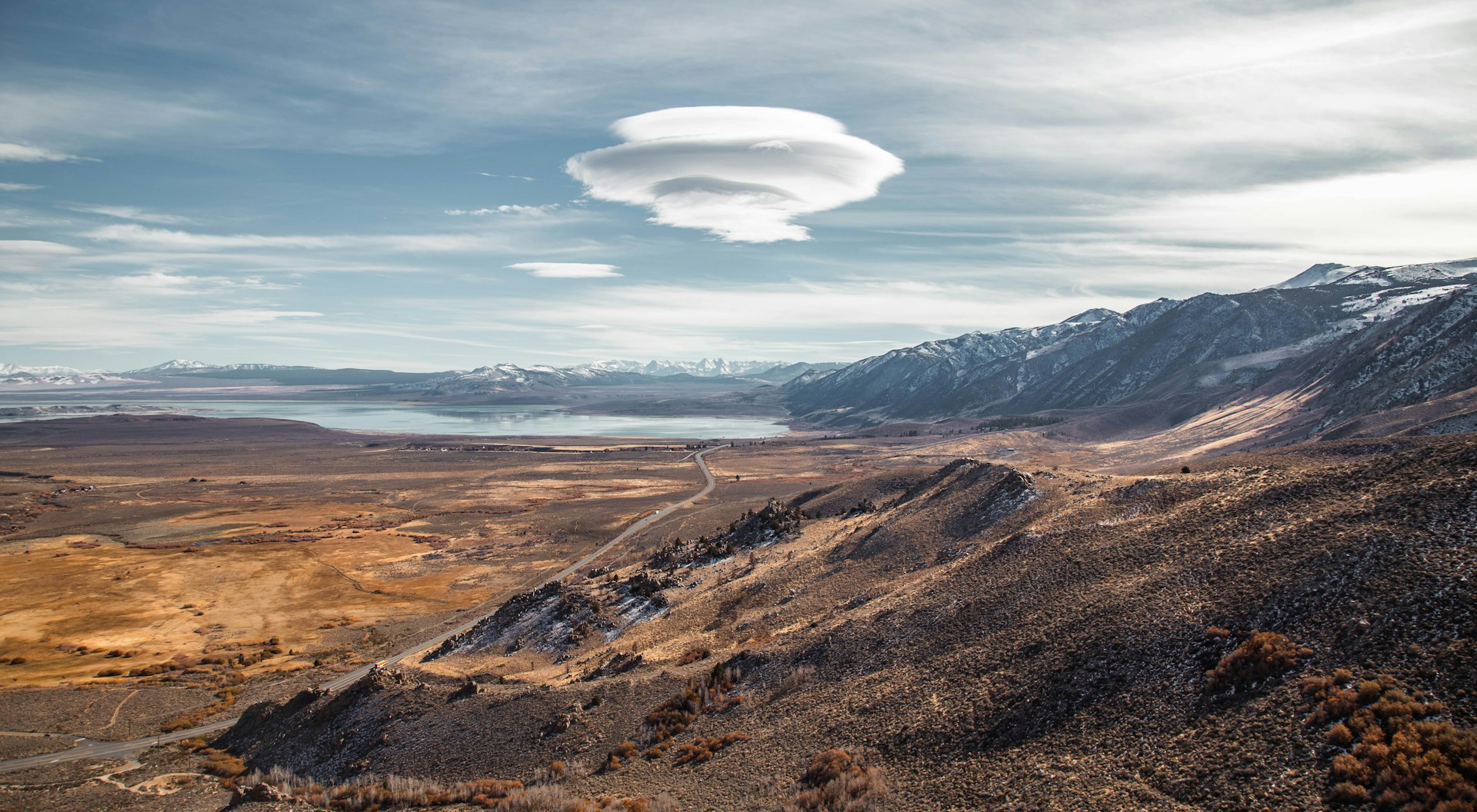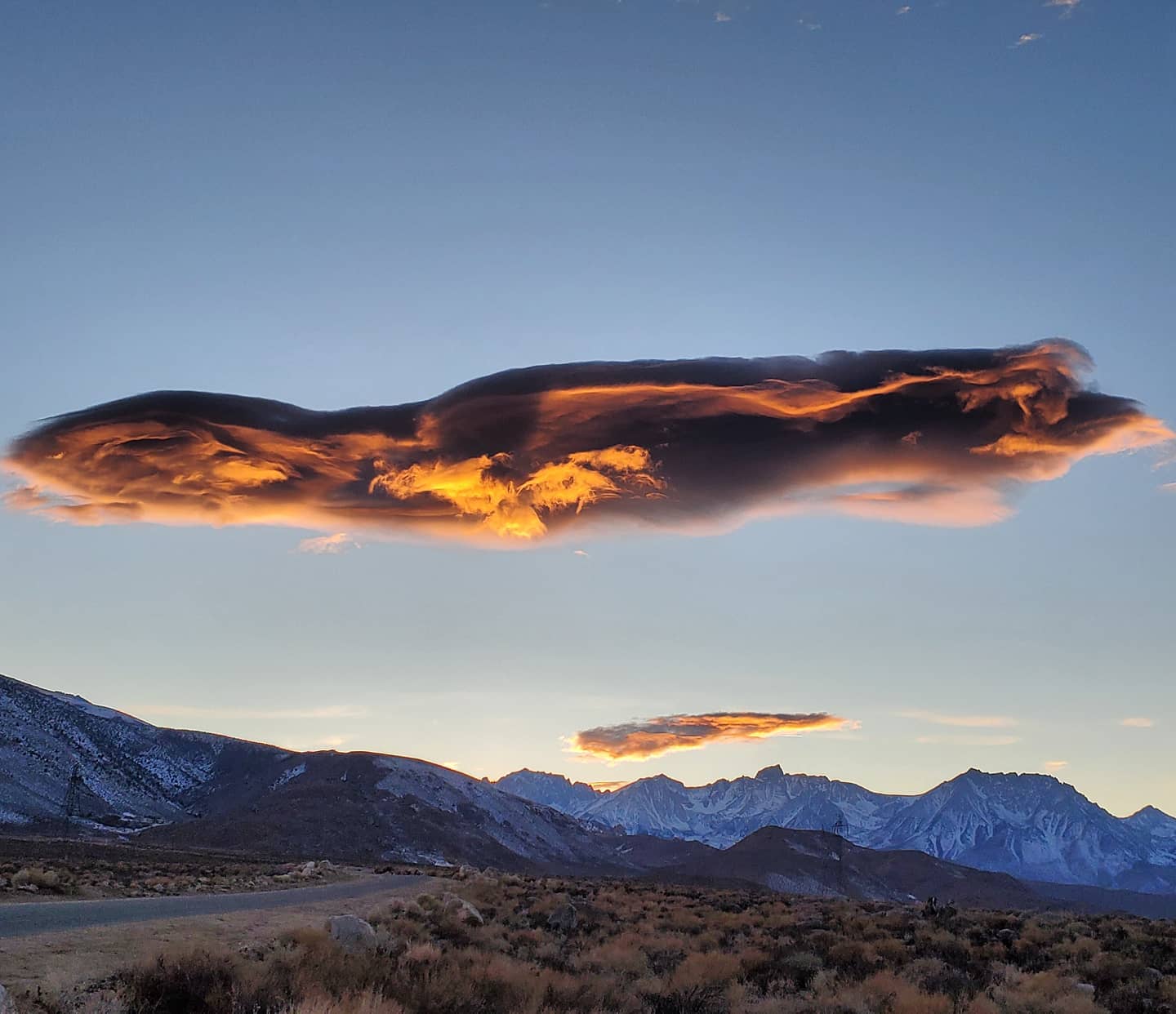We’ll admit it: the Eastern Sierra isn’t the only place in the world with pretty sunsets. Okay yes, we think that our sunsets are the best, but we’re sure that Tuscany and the beaches of Hawaii probably have some fine ones, too.
What does set our sunsets apart, however, is the unique beauty of the Sierra Wave. This is a meteorological phenomenon used to describe a particular cloud formation found only in a handful of places in the world.
In this article, we’ll take a look at what the Sierra Wave is, what it means for wildlife (and us locals!), and how you can capture the perfect photo of it.
What is a Sierra Wave?
The Sierra Wave is California’s version of a cloud formation called a lee wave cloud.
It happens when air flows up over a mountain ridge—in our case, winds coming up over the Sierra Nevada range from the West to the East. When these wind fronts reach our side of the Sierras, they immediately fall and are pushed up again because of changes in temperature. This creates a wave in which lenticular clouds (the ones that look like perfect discs or contact lenses in the sky) form and get trapped in place. One of the spectacular things about lee wave clouds is that they can remain suspended near the edge of the mountain range for long periods of time.

Even though we would love to claim that the Eastern Sierra is the only place in the world where you can see these mountain wave clouds, the truth is, they happen anywhere in the world where you have a pronounced mountain range, cold jet streams and a warmer layer of air on the lee side (downwind side) of the mountain. That being said, the Sierra Wave is one of the most well-known, photographed, and studied in the world. And we can bet that it’s one of the only ones in the world with a beer named after it, but more on that later.
Why are Sierra Waves so beautiful?
Sierra Waves are some of the most dramatic cloud formations thanks to the unique saucer-like form created by rising and falling air flows. But, it’s actually the timing of these cloud formations that is key to a perfect sunset.
For one thing, lee wave clouds appear most frequently in the late afternoon and early evening—already a beautiful time of day. And, they also tend to form at a higher elevation than the ridgeline (the highest lenticular clouds usually sit around 30,000 to 40,000ft.) What this means is that there is a period of time in which they are backlit by the sun setting on the other side of the ridgeline. This creates a stunning contrast between the dark side of the cloud that we see on this side of the mountain and the bright, almost lava-like effect of the reflection of the sunset on the other side of the cloud. Pair that with the jagged silhouette of the minarets, and you’ve got yourself a truly breathtaking show.

Even though this phenomenon happens frequently, every Sierra Wave formation is slightly different which is why we locals never fail to point out to anyone who will listen to get outside when these clouds make an appearance.
We’re not the only ones who enjoy a good Sierra Wave
As it turns out, humans who live in the Eastern Sierra aren’t the only ones who seek out this gorgeous display! In fact, native birds have been benefiting from this weather phenomenon for centuries.
That’s because lee waves create an advantageous uplift that soaring birds use to conserve energy on long flights. These true California surfers, such as Turkey Vultures, Red-Tailed Hawks, and Bald Eagles, catch air flow waves that allow them to cover vast distances without ever having to flap their wings.
The lore around Sierra Waves
These interestingly-shaped lenticular clouds have gained a lot of attention over the years, for their beauty, of course, but also for their mystery and even danger!
Let’s start with the mystery. As you might have noticed, there’s something a bit eerie about a lenticular cloud. That shape is just so perfect that it gives off the impression of being man-made. In fact, it’s believed that some of these clouds may be responsible for reported UFO-sightings. This makes sense given that they give off an iridescent glow right before “disappearing” from sight as the sun sets.

Now, how about the danger? Well, ask any pilot and they’ll tell you that lee waves are tricky business. The reason being that the same phenomenon that creates the soft-looking Sierra Wave clouds also creates what are called rotor clouds. Rotos form below the ridge of the mountain range and can create strong turbulence. In fact, the airport most well-known for being plagued by this weather pattern is the Mount Pleasant Airport in the Malvinas Islands, where rotor clouds frequently prevent flights from being able to land at all. Luckily, here in Mammoth, the rotor clouds don’t get in the way of safe air travel to our airport. But, they may be partly to blame for any turbulence you feel coming in!
Finally, you might have noticed that we locals have a special affinity for these iconic clouds. Not only do we have a media station named the Sierra Wave with radio and television broadcasting, but you might have also seen the Sierra Wave on the beer list at Mammoth Brewing Company. To put it shortly, these clouds are just part of the culture here!
When is the best time to see Sierra Waves?
As we mentioned, day-to-day, these clouds are most common in the late afternoon and early evening as winds pick up over the crest. But, if you’re thinking of planning a trip up to Mammoth to see these clouds, your best chances are in late winter and early spring.

How to photograph Sierra Waves?
Because of their rarity and dramatic nature, capturing lenticular clouds is considered a treat by many photographers! Here are a few tips from the pros to get great Sierra Wave shots.
If you’re using a DSLR camera:
-
Use a polarizing filter, which will enhance the contrast between the wave clouds and the sky
-
Adjust your settings for a shorter exposure time. Longer exposure will give you streaky-looking clouds while shorter exposure will more adequately capture the wave clouds in detail.
-
Keep your ISO low.
-
Get ready to edit, paying close attention to white balance
If you’re using a smartphone:
-
Use your phone’s camera settings to lower the exposure
-
Try HDR mode, which will help to balance the contrast
-
Adjust the saturation to bring out the stunning sunset colors reflected off the Sierra Waves
Have you seen these stunning clouds in person?
If you’ve never experienced the awesome sight of a Sierra Wave in person, you’re in for a real treat! Right now is a great time to see these unique clouds in person, so make sure to plan your next trip to the mountains—and bring your camera!
Take a look at some of the condos we have available that will give you great sky views during your next trip to Mammoth Lakes!
